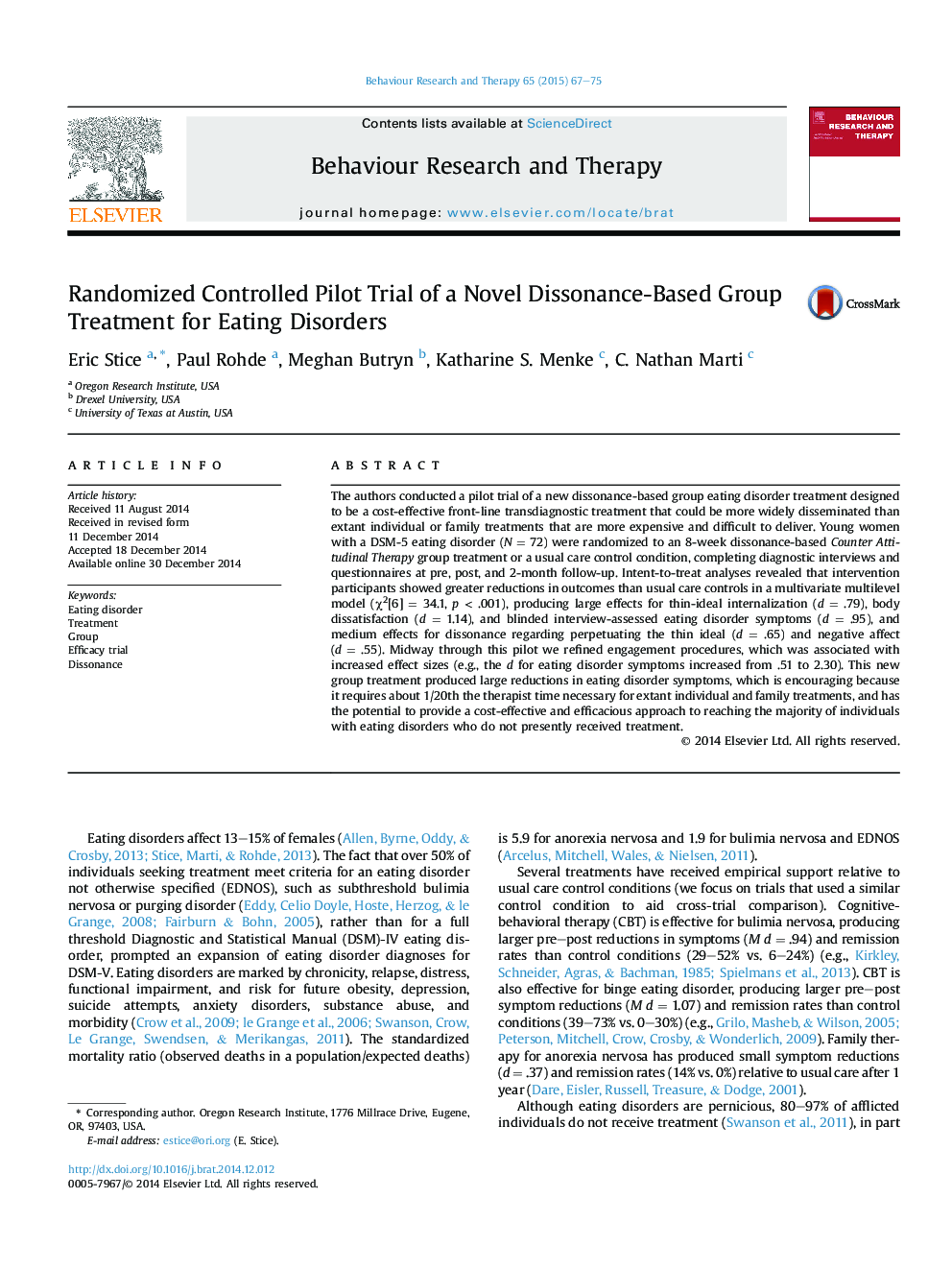| Article ID | Journal | Published Year | Pages | File Type |
|---|---|---|---|---|
| 901811 | Behaviour Research and Therapy | 2015 | 9 Pages |
•Pilot tested a new dissonance-based group eating disorder treatment.•Randomized 72 women with eating disorders to Body Acceptance Therapy or usual care.•Intervention produced a larger reduction in eating disorder symptoms (d = .95).•Symptom reduction was larger after engagement procedures were refined (d = 2.30).•Results are very encouraging given cost-effectiveness of this group treatment.
The authors conducted a pilot trial of a new dissonance-based group eating disorder treatment designed to be a cost-effective front-line transdiagnostic treatment that could be more widely disseminated than extant individual or family treatments that are more expensive and difficult to deliver. Young women with a DSM-5 eating disorder (N = 72) were randomized to an 8-week dissonance-based Counter Attitudinal Therapy group treatment or a usual care control condition, completing diagnostic interviews and questionnaires at pre, post, and 2-month follow-up. Intent-to-treat analyses revealed that intervention participants showed greater reductions in outcomes than usual care controls in a multivariate multilevel model (χ2[6] = 34.1, p < .001), producing large effects for thin-ideal internalization (d = .79), body dissatisfaction (d = 1.14), and blinded interview-assessed eating disorder symptoms (d = .95), and medium effects for dissonance regarding perpetuating the thin ideal (d = .65) and negative affect (d = .55). Midway through this pilot we refined engagement procedures, which was associated with increased effect sizes (e.g., the d for eating disorder symptoms increased from .51 to 2.30). This new group treatment produced large reductions in eating disorder symptoms, which is encouraging because it requires about 1/20th the therapist time necessary for extant individual and family treatments, and has the potential to provide a cost-effective and efficacious approach to reaching the majority of individuals with eating disorders who do not presently received treatment.
